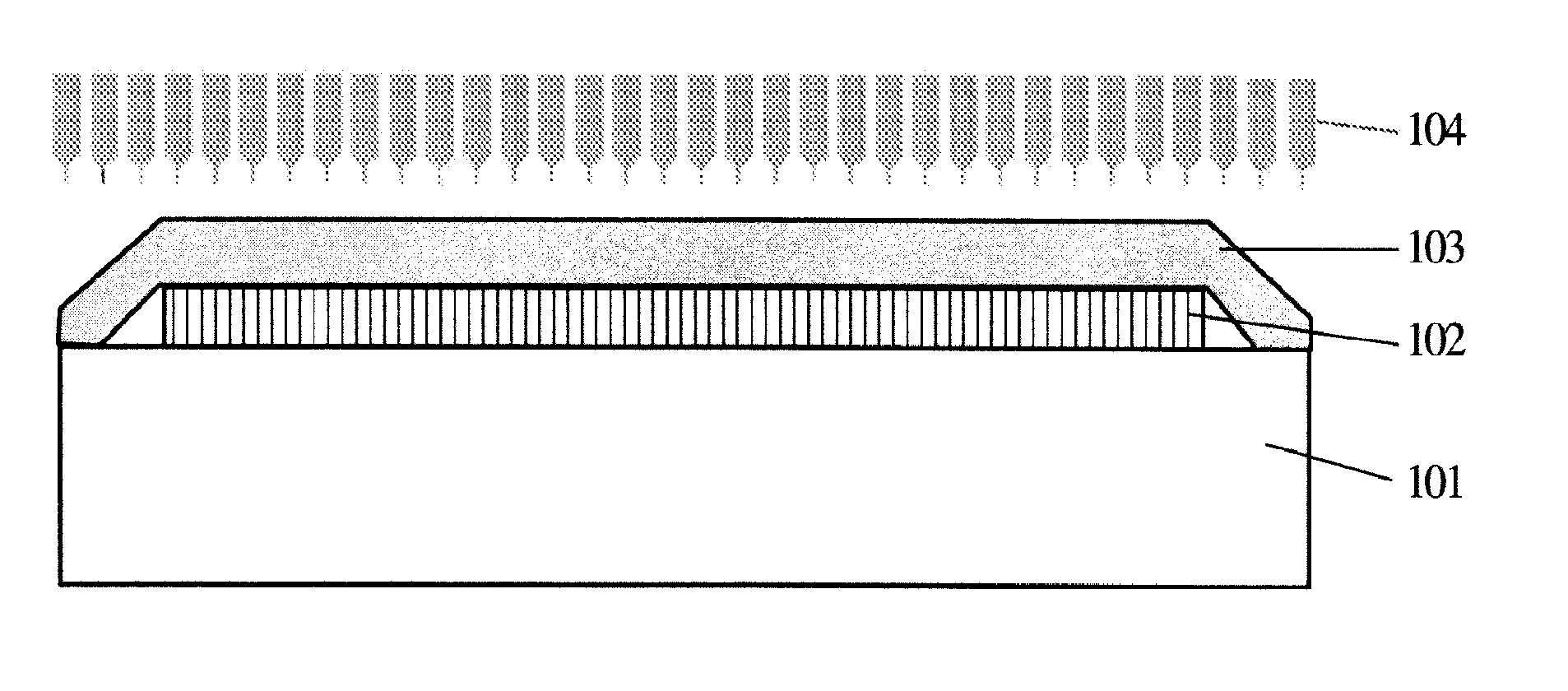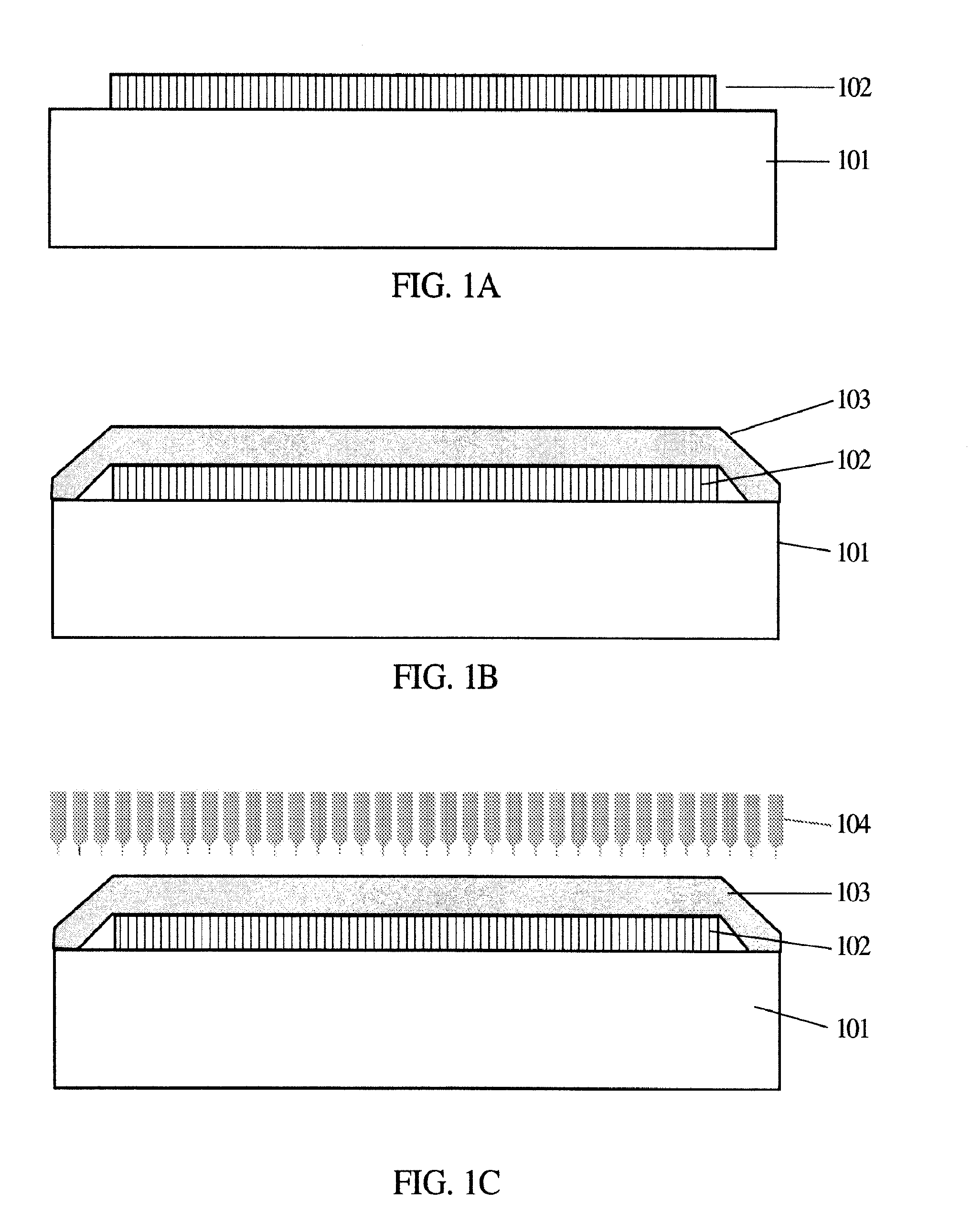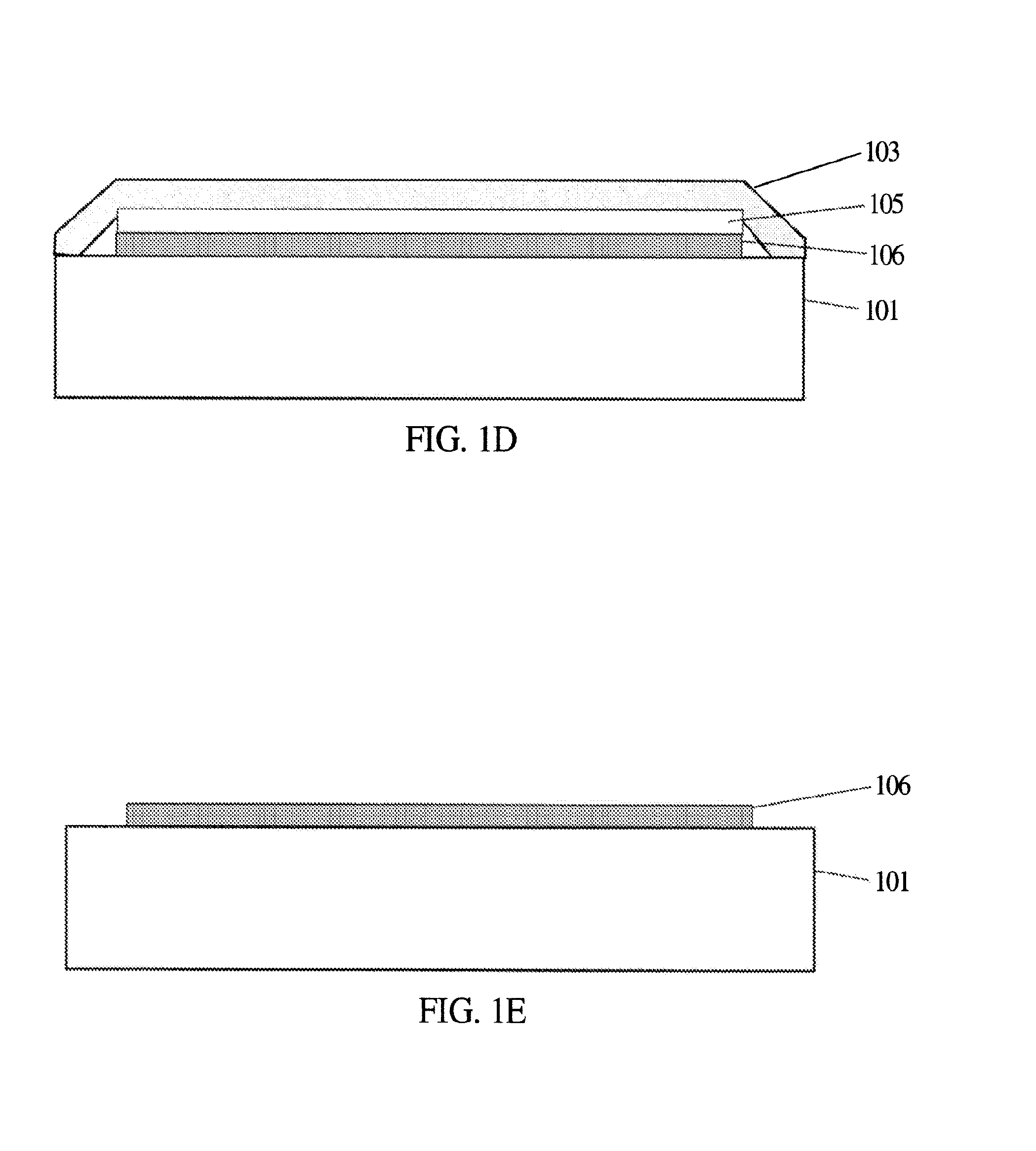Sintering Metallic Inks on Low Melting Point Substrates
a technology of metallic inks and substrates, applied in the direction of semiconductors, nuclear engineering, electrical engineering, etc., can solve the problems of high energy consumption, high cost, and high cost of sintering copper inks or paste films applied to low melting point flexible films, etc., to achieve the effect of reducing the overall density and conductivity of the film, increasing the adhesion between adjacent particles, and increasing the adhesion of inks
- Summary
- Abstract
- Description
- Claims
- Application Information
AI Technical Summary
Benefits of technology
Problems solved by technology
Method used
Image
Examples
Embodiment Construction
[0026]In order to maintain film density and conductivity while providing sufficient adhesion, there needs to be consideration for maintaining the adhesive promoter outside the surface coating film. Embodiments described herein implement placement of a cover film on top of a dried copper nanoparticle film. The cover layer acts to provide a thermal transfer buffer to decrease heat loss to the outside environment, inhibit a residue from remaining inside the resulting film, and confine any inter-particle motion in the film to the X,Y plane inhibiting ablation in a Z direction.
[0027]During a “flash lamp” curing parameter optimization study of dried copper ink film on a flexible substrate, a substrate was secured to a thick paper support with strips of translucent tape at the edges. It was noticed that after exposure to the flash lamp, the edges of the substrate under the tape yielded a copper film. When the tape was removed, a conductive copper film remained at those edges. Prompted by t...
PUM
| Property | Measurement | Unit |
|---|---|---|
| size | aaaaa | aaaaa |
| time | aaaaa | aaaaa |
| conductive | aaaaa | aaaaa |
Abstract
Description
Claims
Application Information
 Login to View More
Login to View More - R&D
- Intellectual Property
- Life Sciences
- Materials
- Tech Scout
- Unparalleled Data Quality
- Higher Quality Content
- 60% Fewer Hallucinations
Browse by: Latest US Patents, China's latest patents, Technical Efficacy Thesaurus, Application Domain, Technology Topic, Popular Technical Reports.
© 2025 PatSnap. All rights reserved.Legal|Privacy policy|Modern Slavery Act Transparency Statement|Sitemap|About US| Contact US: help@patsnap.com



